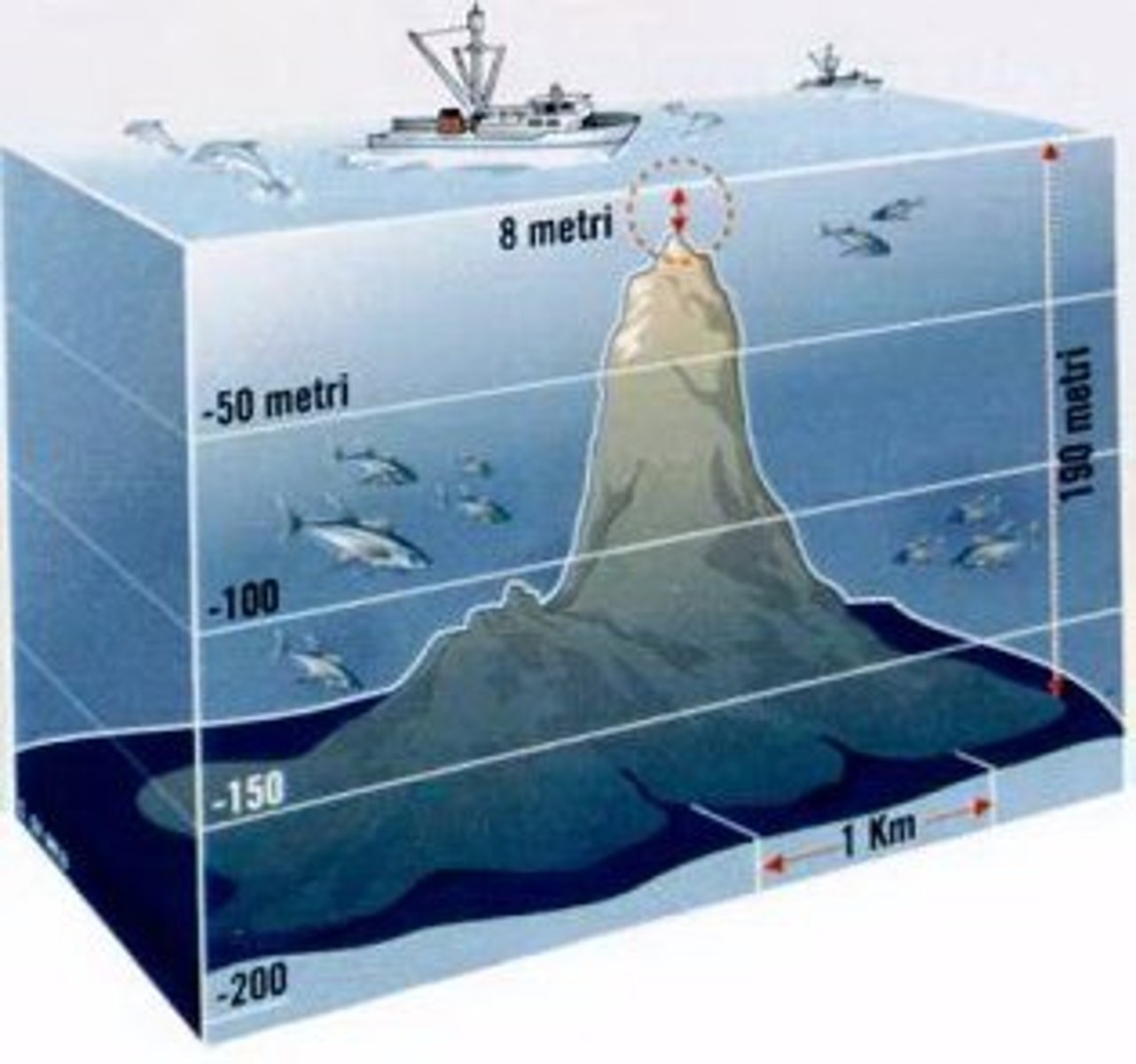Continental Drift and Clues found on the seafloor
1/16
There's no tags or description
Looks like no tags are added yet.
Name | Mastery | Learn | Test | Matching | Spaced |
|---|
No study sessions yet.
17 Terms
Pangaea
large, ancient landmass that was composed of all the continents joined together
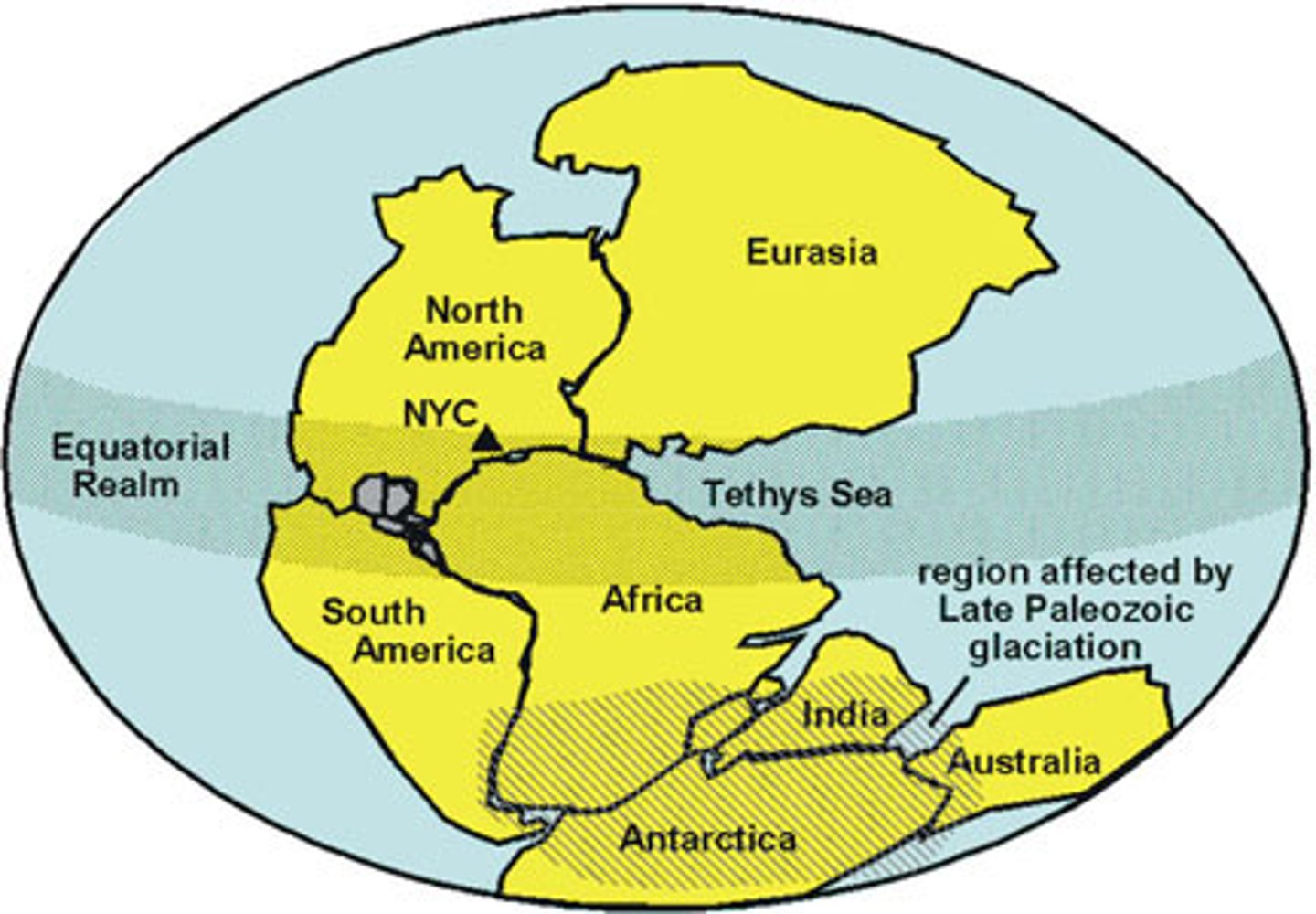
Continental Drift Theory
the idea that continents slowly shift their positions due to movement of the tectonic plates on which they ride
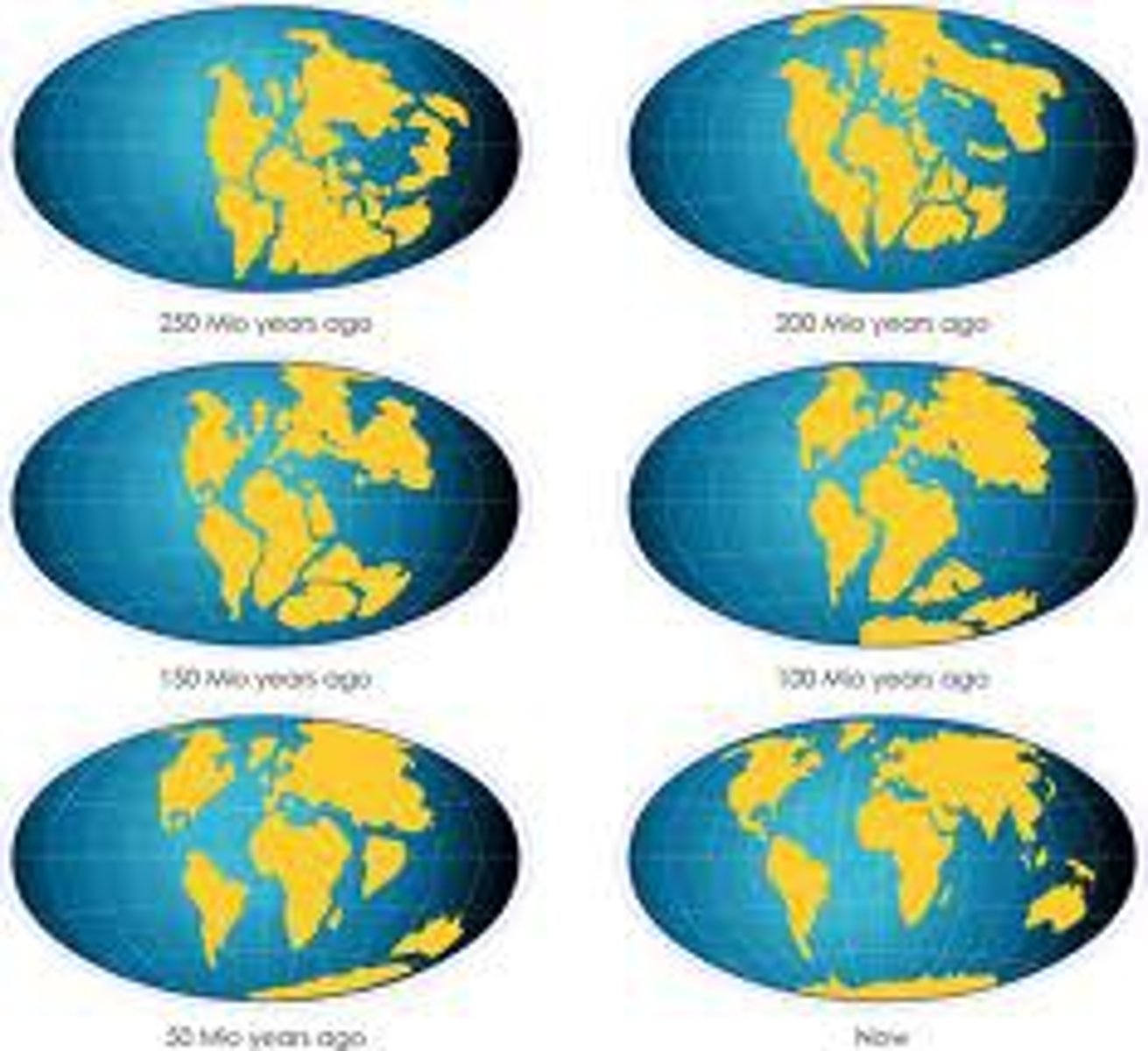
Alfred Wegener
A German scientist who proposed the theroy of continental drift
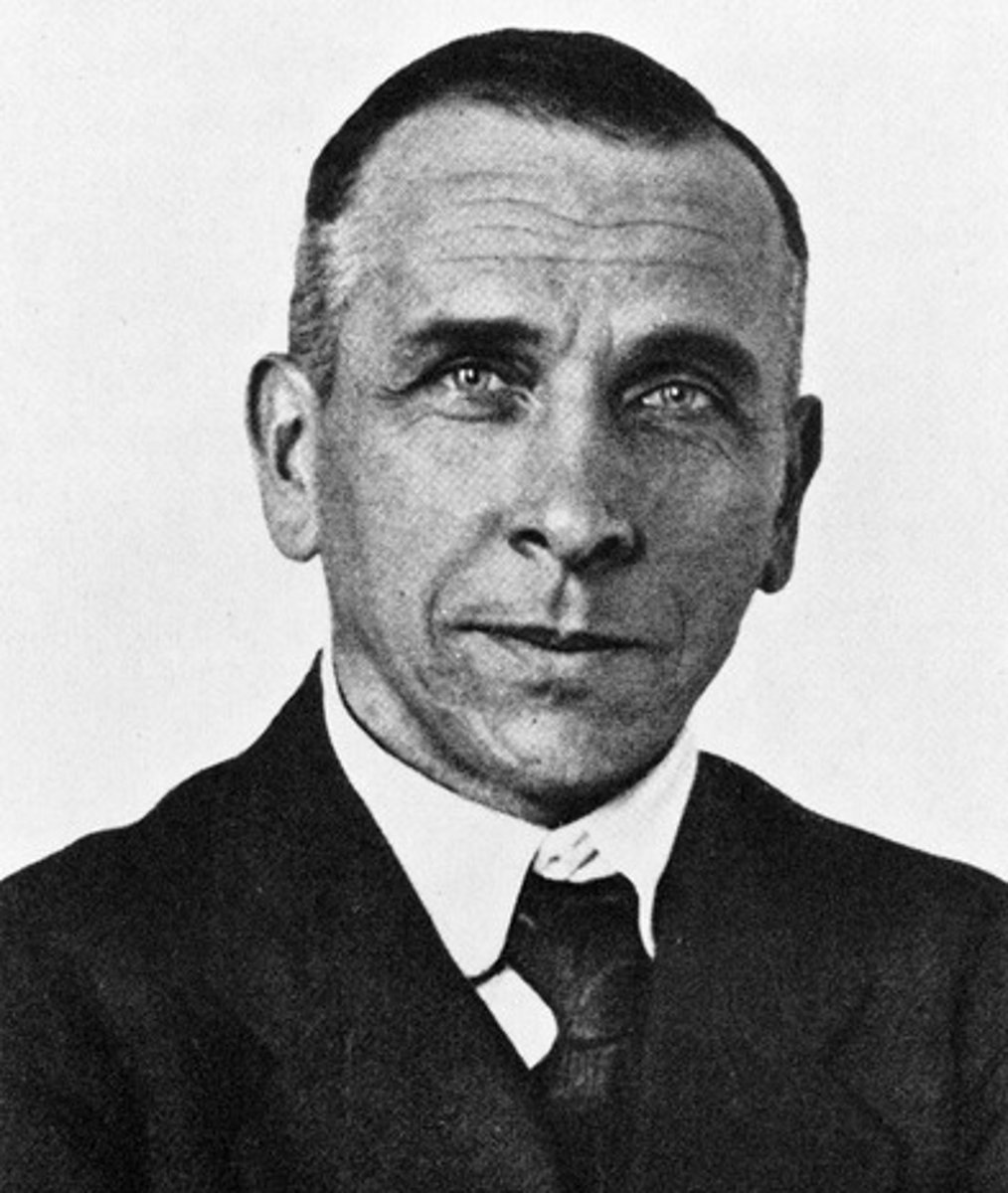
buoyancy
the ability or tendency to float in water or air or some other fluid.
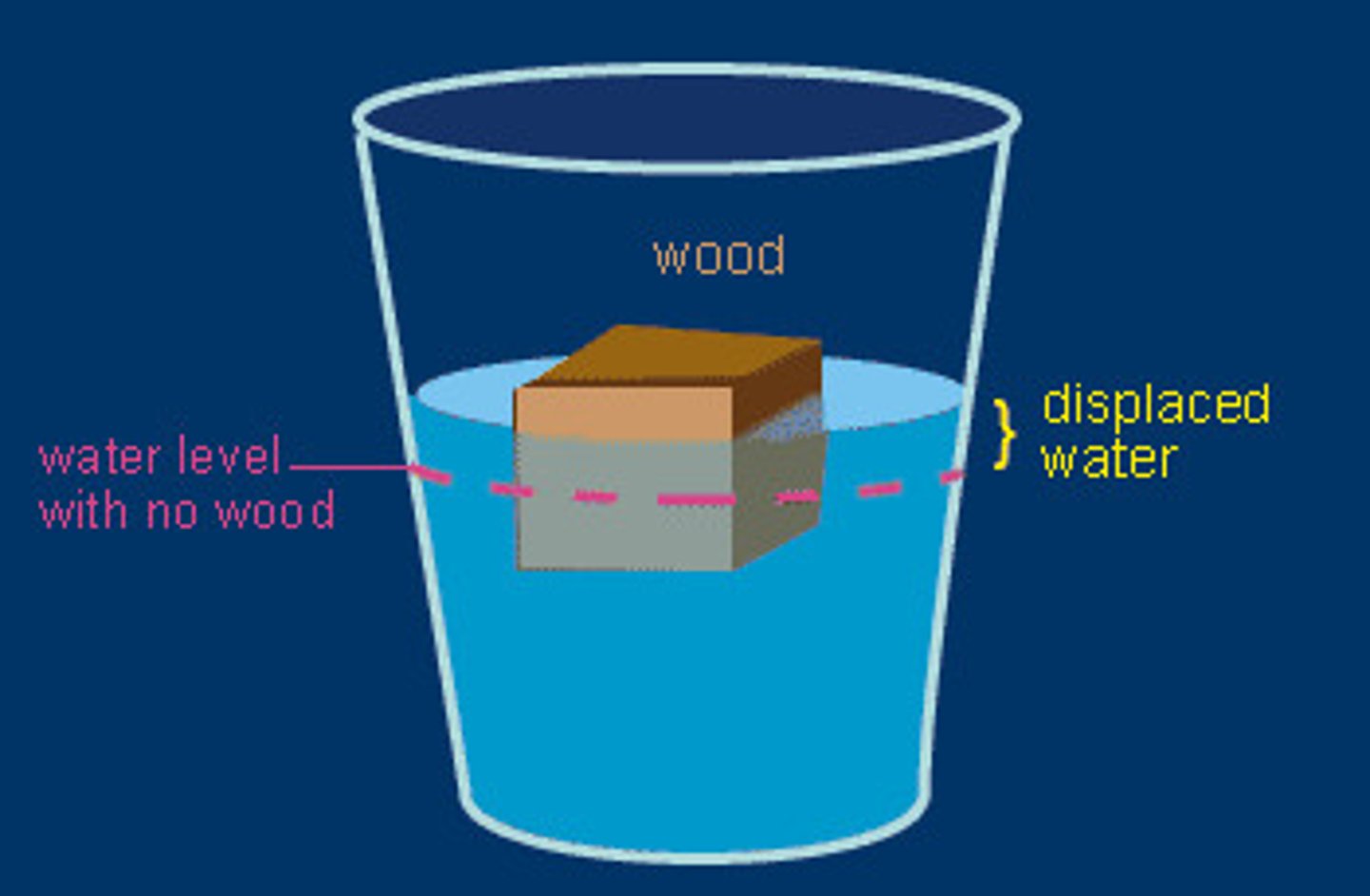
Glossopteris fossils
these were plants that resembled ferns found on different continents. They lived about 250 million years ago. Their seeds have traveled across the ocean.
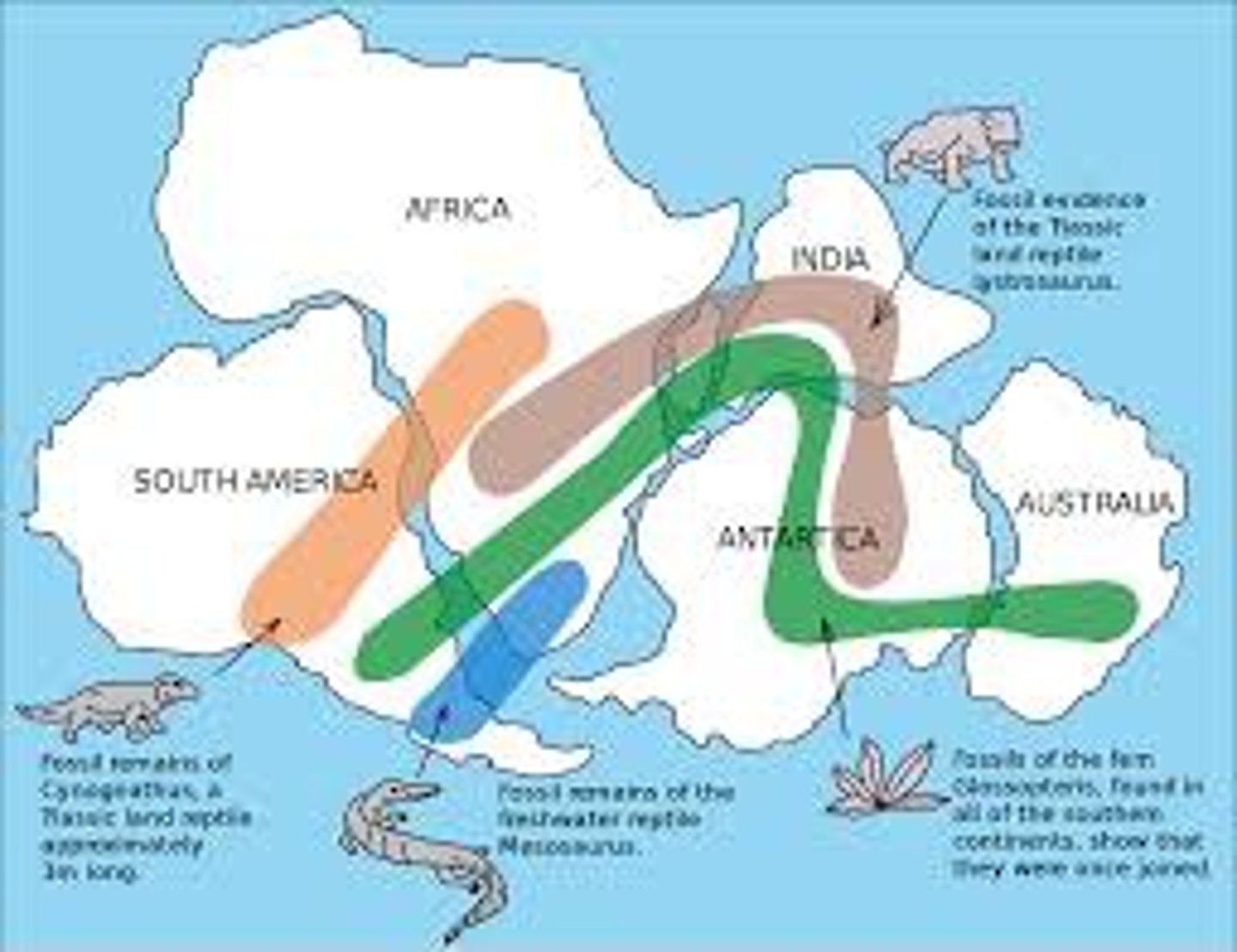
Climate clues of continental drift
-glacial striations found on rocks indicated glaciers existed in areas that now were not located in an area on Earth cold enough to support the glaciers
Mesosaurus and Lystrosaurus
Wegener inferred that these ancient reptiles once lived on a single landmass that has since split apart

Rock Correlation
The matching of rock layers from one area to another

mid-ocean ridge
An underwater mountain chain where new ocean floor is formed
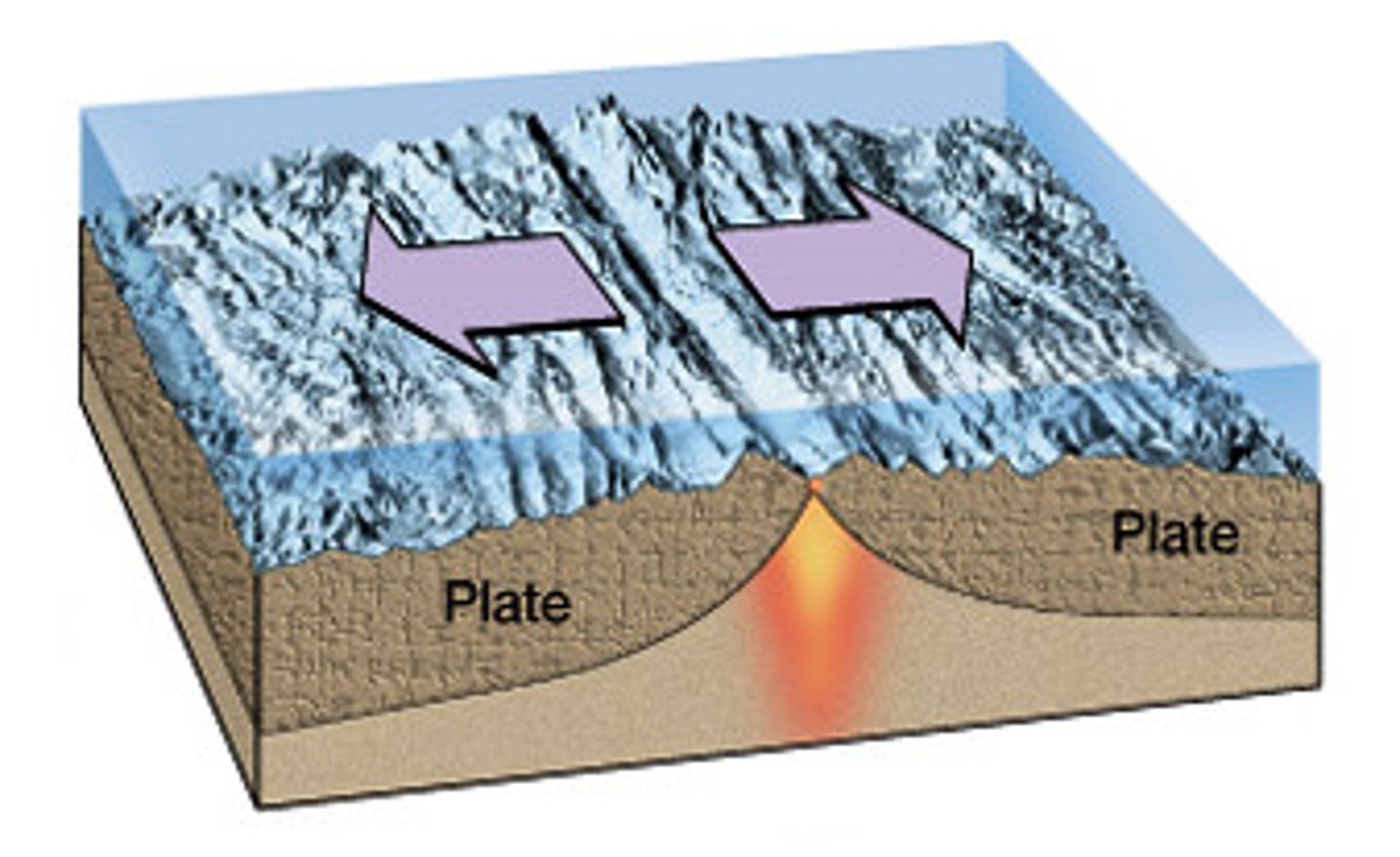
magnetic reversal
a switch in the direction of Earth's magnetic field so that the magnetic north pole becomes the magnetic south pole and the magnetic south pole becomes the magnetic north pole.
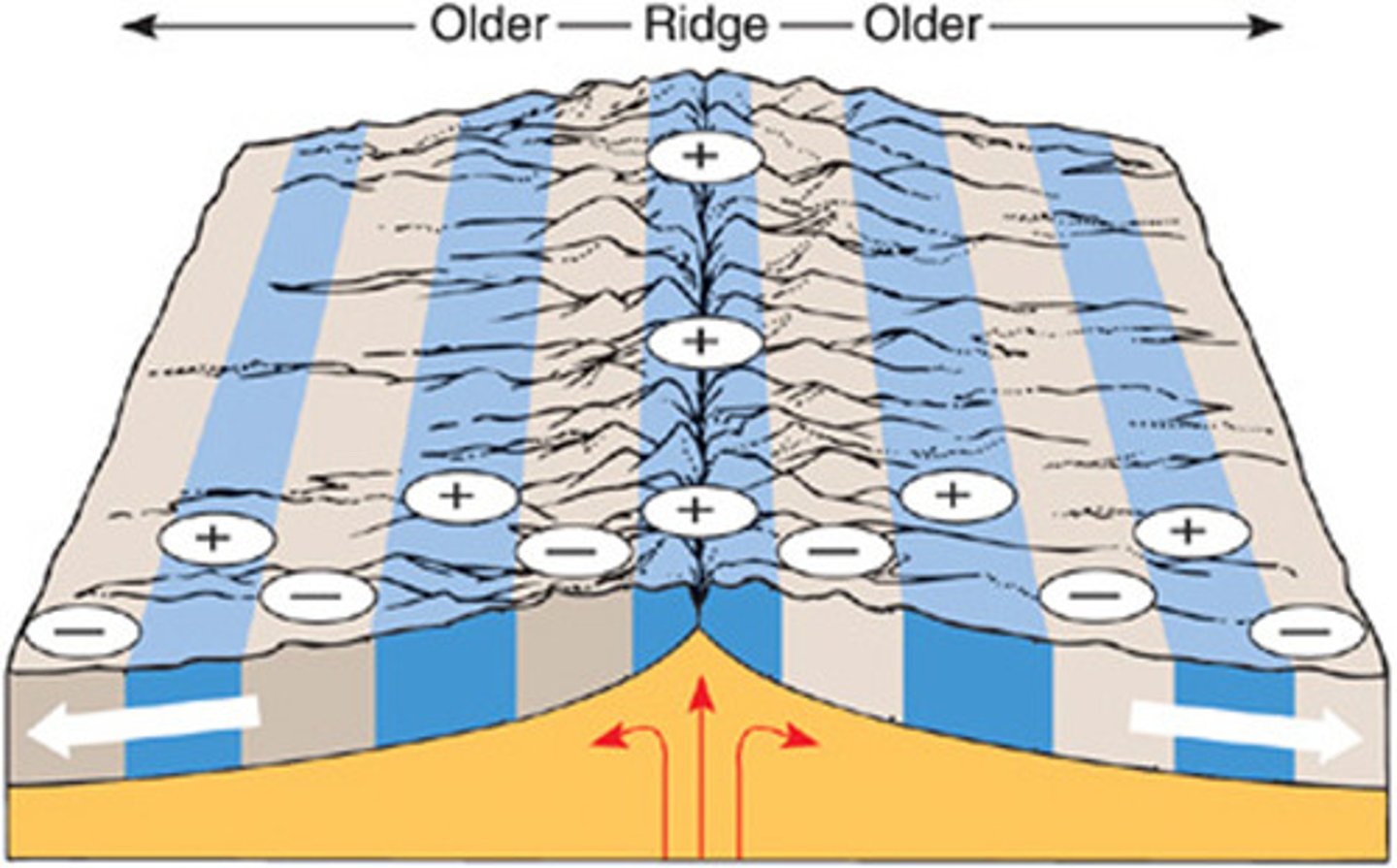
Age of seafloor rocks
Progressively younger toward the mid-oceanic ridge
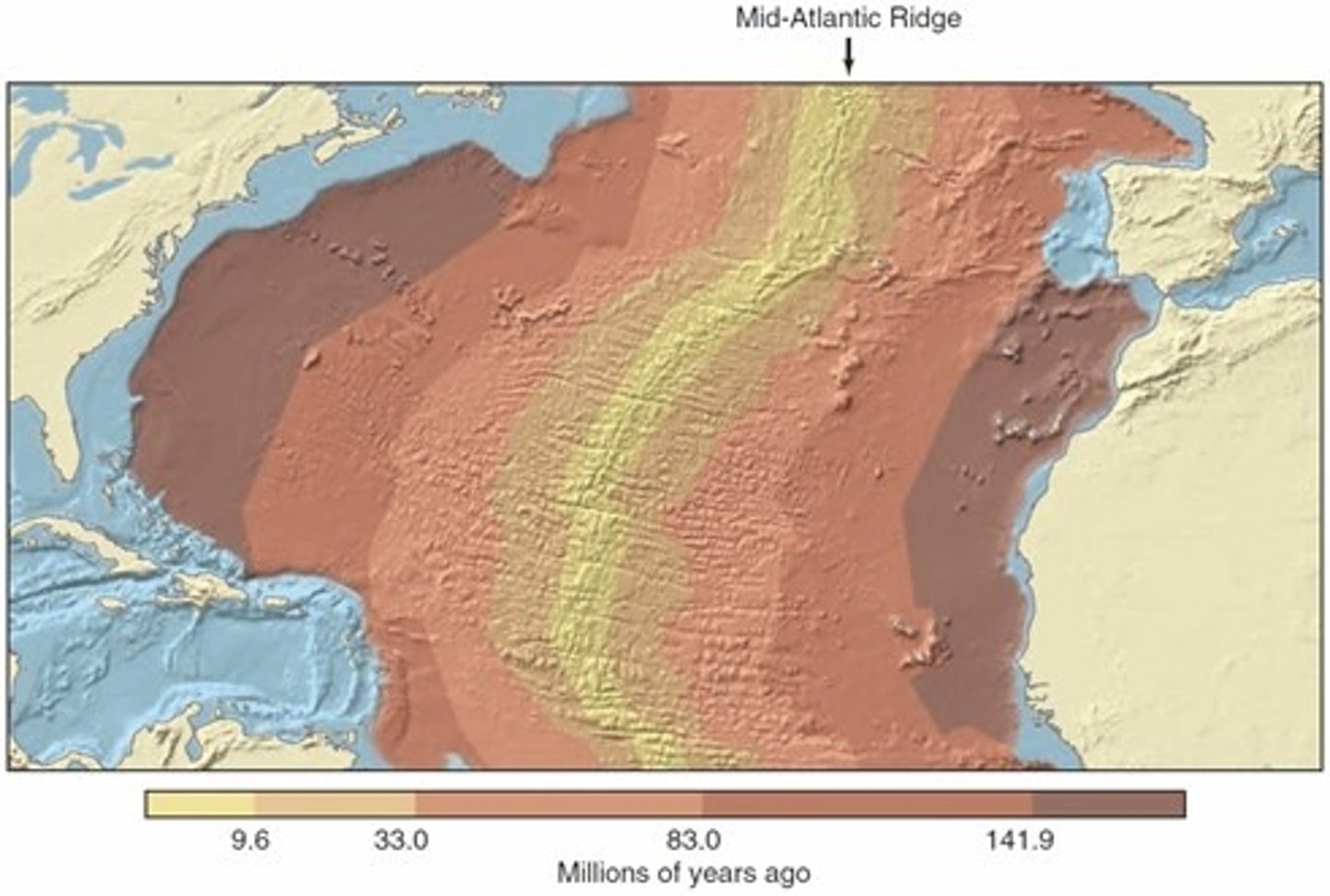
rift valley
A deep valley that forms where two plates move apart
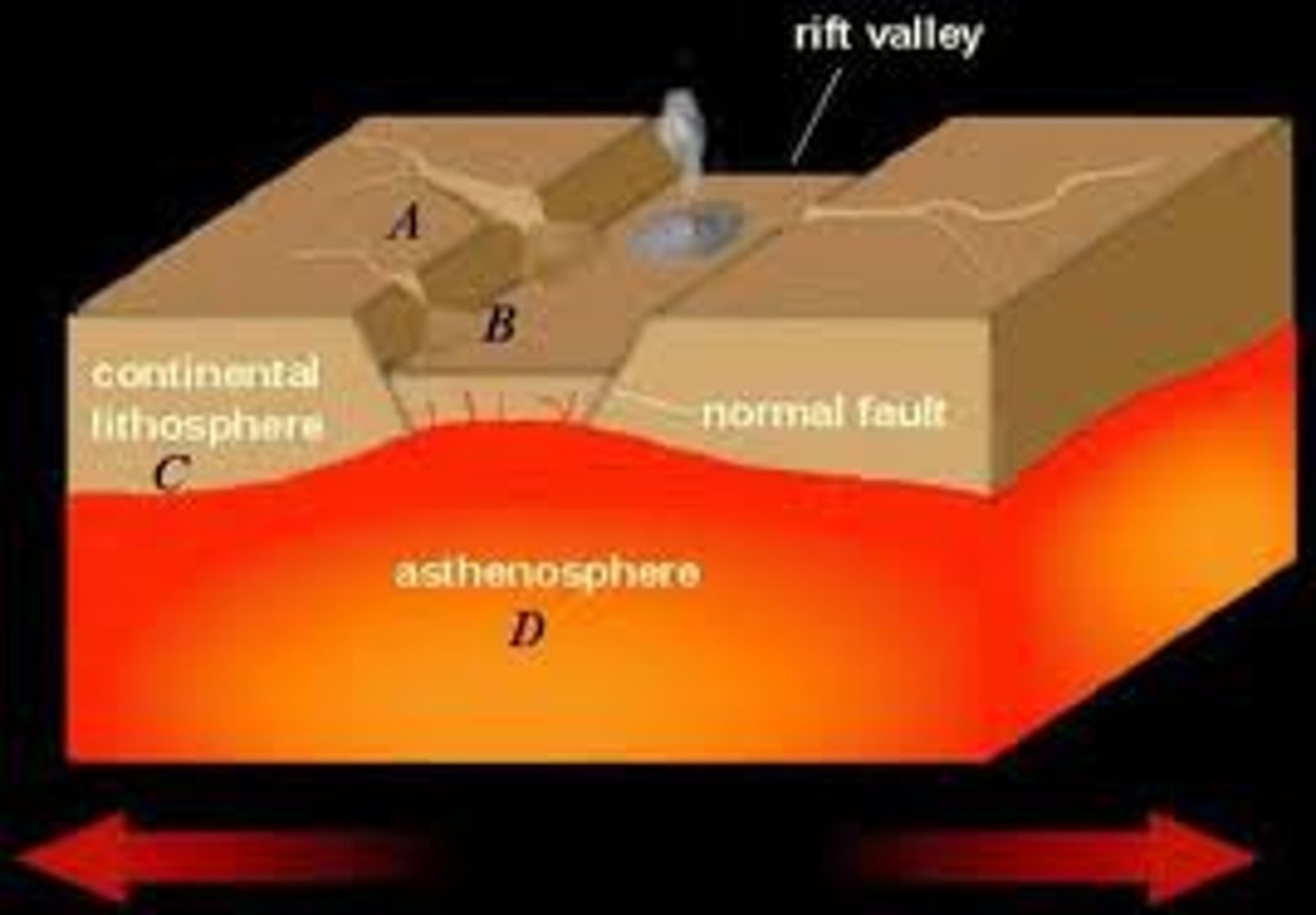
continental shelf
A gently sloping, shallow area of the ocean floor that extends outward from the edge of a continent
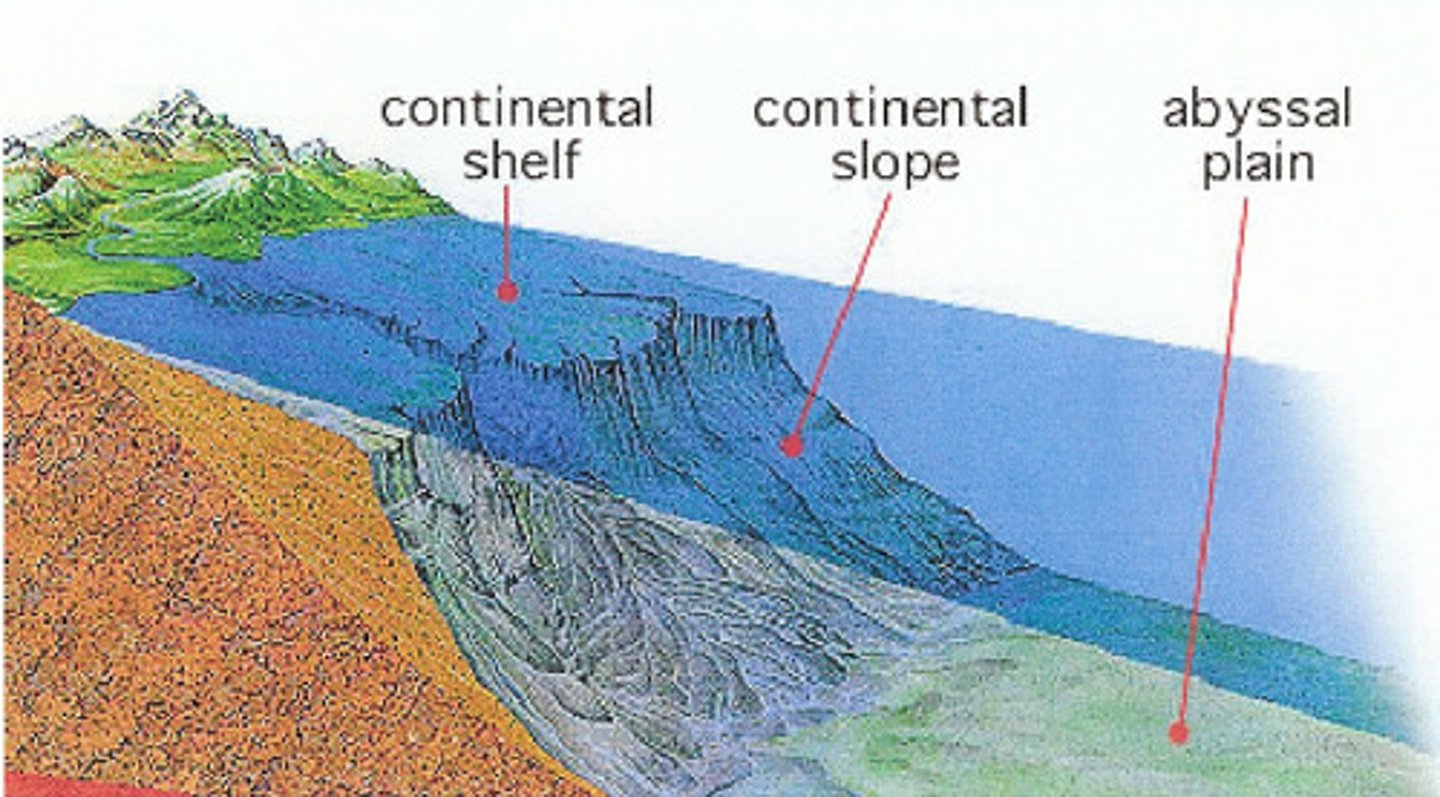
Plate Tectonics
A theory stating that the earth's surface is broken into plates that move.
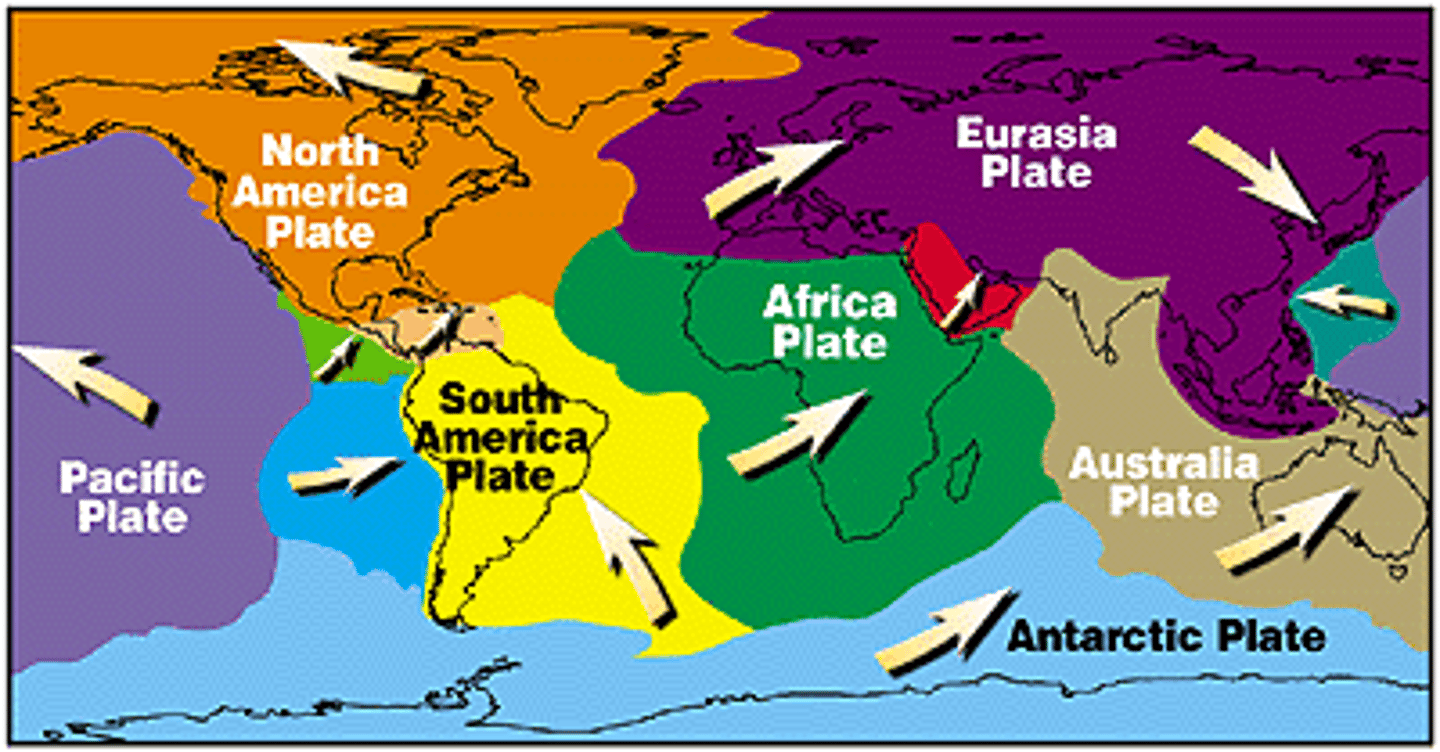
abyssal plain
a large, flat, almost level area of the deep-ocean basin
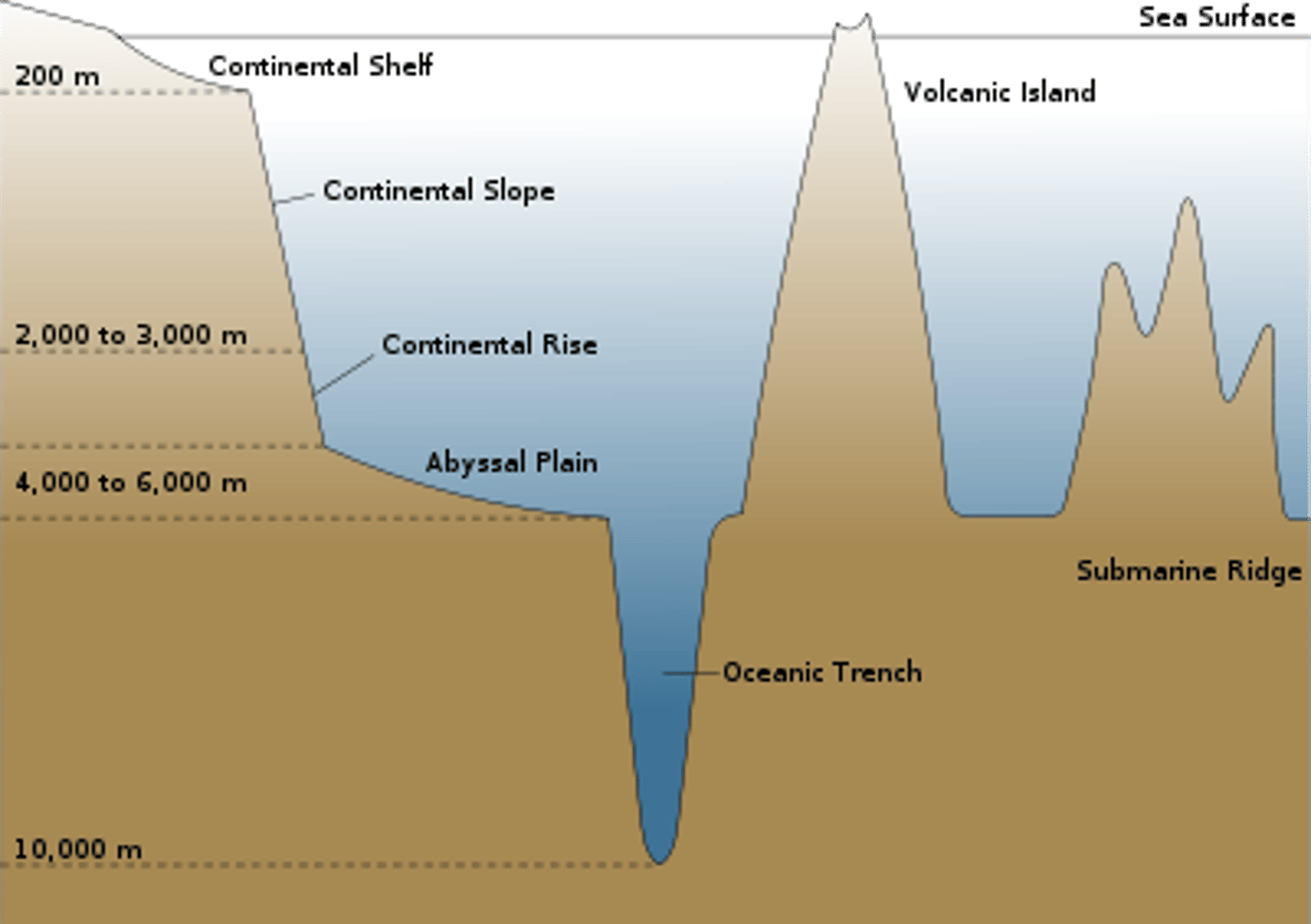
island
a piece of land surrounded by water
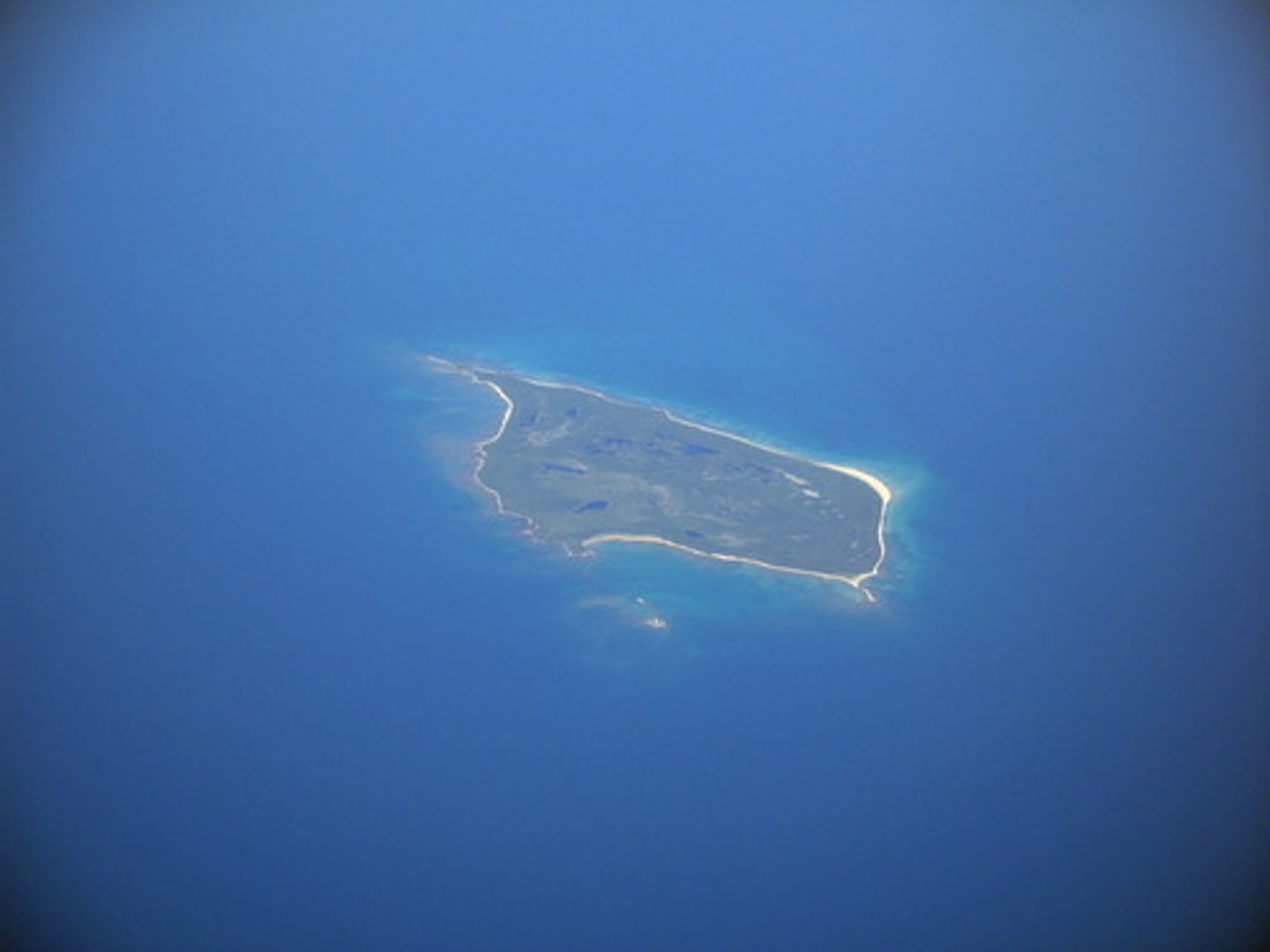
Seamount
an underwater mountain rising above the ocean floor
